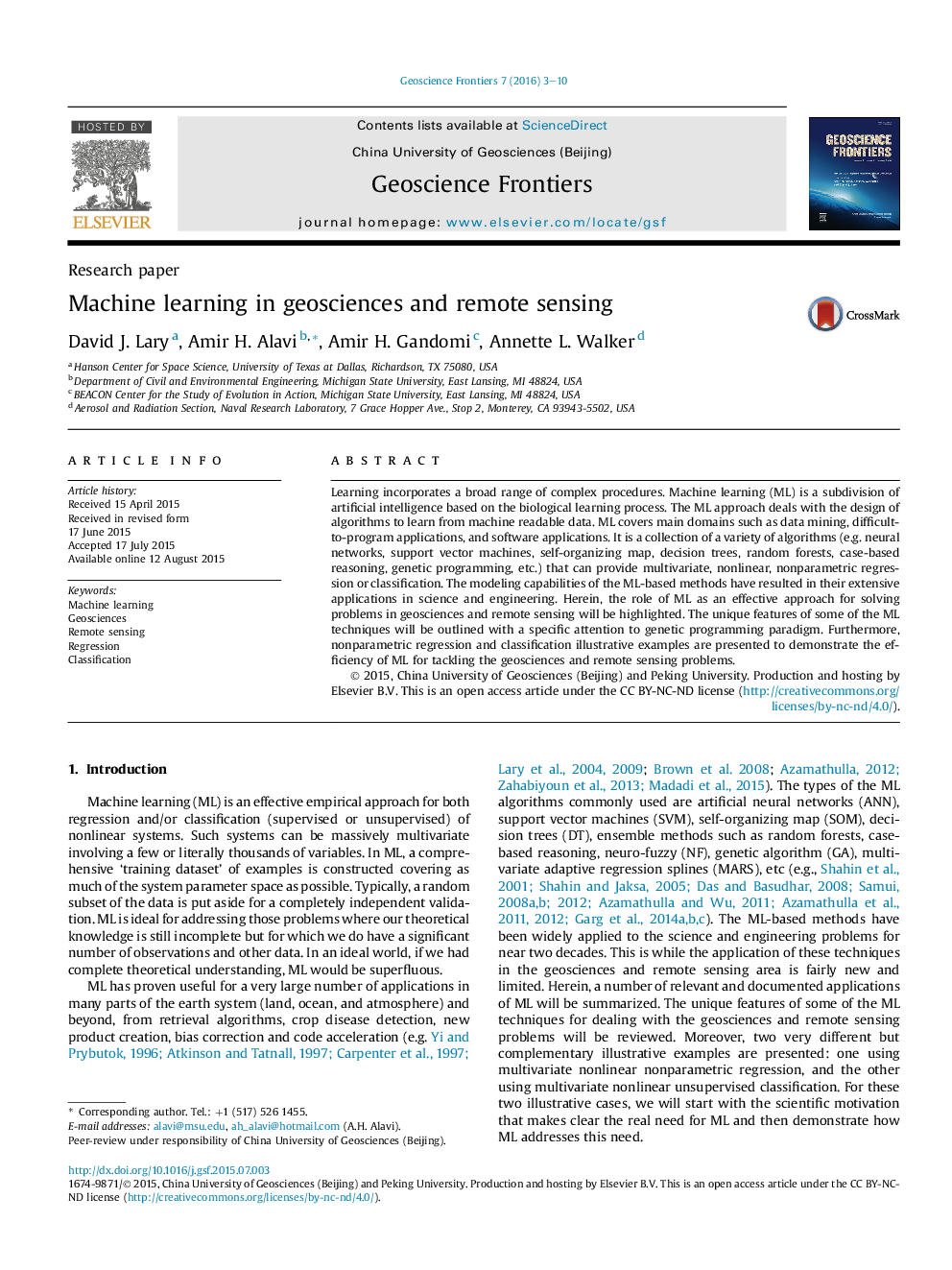| Article ID | Journal | Published Year | Pages | File Type |
|---|---|---|---|---|
| 4681517 | Geoscience Frontiers | 2016 | 8 Pages |
•Highlighting the role of machine learning for solving problems in geosciences and remote sensing.•Developing a typical nonparametric regression for the abundance of ground level airborne particulate matter.•Developing a typical classification model for identifying global dust sources.
Learning incorporates a broad range of complex procedures. Machine learning (ML) is a subdivision of artificial intelligence based on the biological learning process. The ML approach deals with the design of algorithms to learn from machine readable data. ML covers main domains such as data mining, difficult-to-program applications, and software applications. It is a collection of a variety of algorithms (e.g. neural networks, support vector machines, self-organizing map, decision trees, random forests, case-based reasoning, genetic programming, etc.) that can provide multivariate, nonlinear, nonparametric regression or classification. The modeling capabilities of the ML-based methods have resulted in their extensive applications in science and engineering. Herein, the role of ML as an effective approach for solving problems in geosciences and remote sensing will be highlighted. The unique features of some of the ML techniques will be outlined with a specific attention to genetic programming paradigm. Furthermore, nonparametric regression and classification illustrative examples are presented to demonstrate the efficiency of ML for tackling the geosciences and remote sensing problems.
Graphical abstractFigure optionsDownload full-size imageDownload as PowerPoint slide
